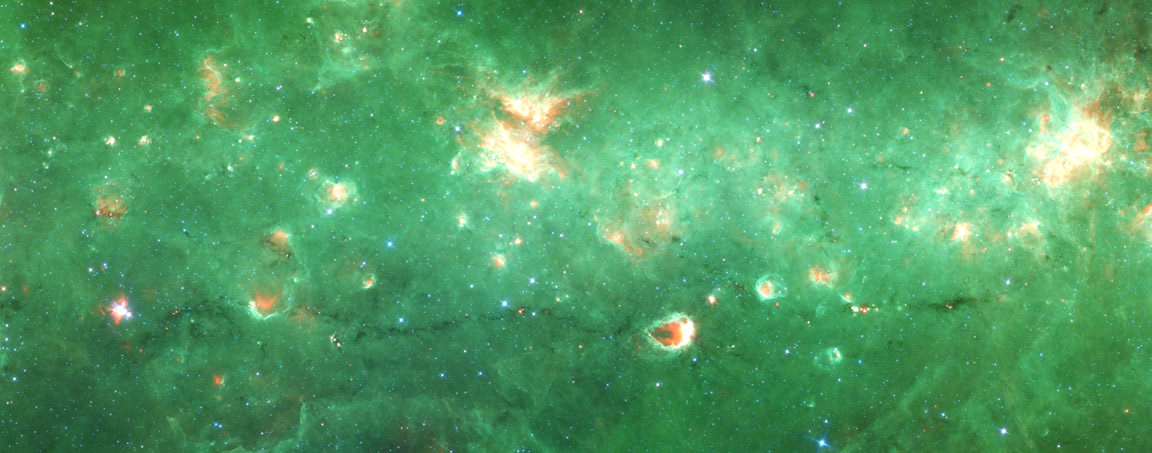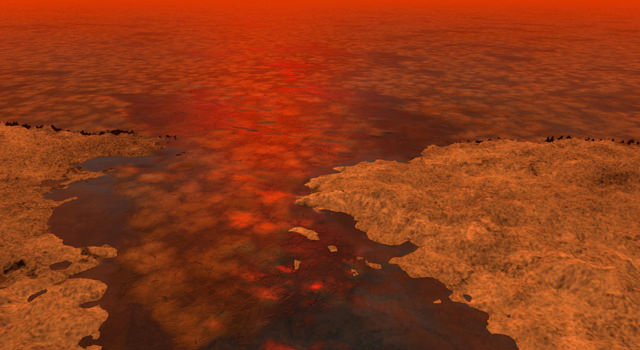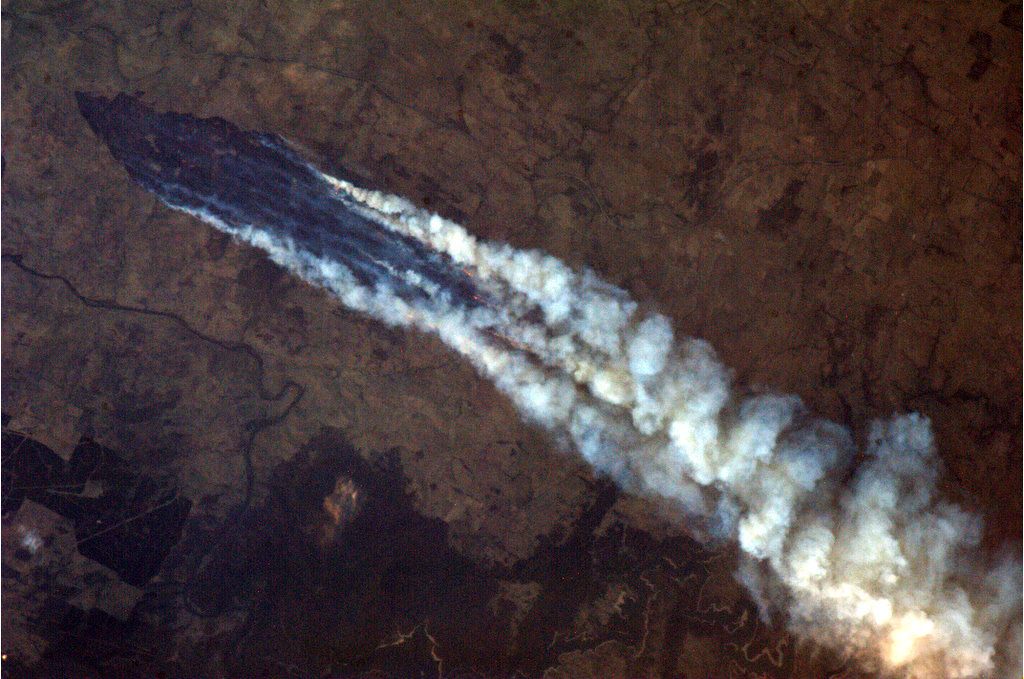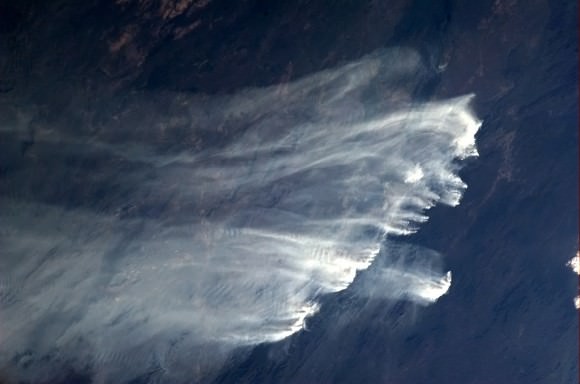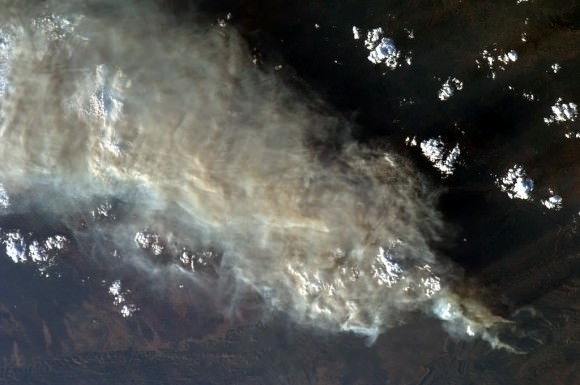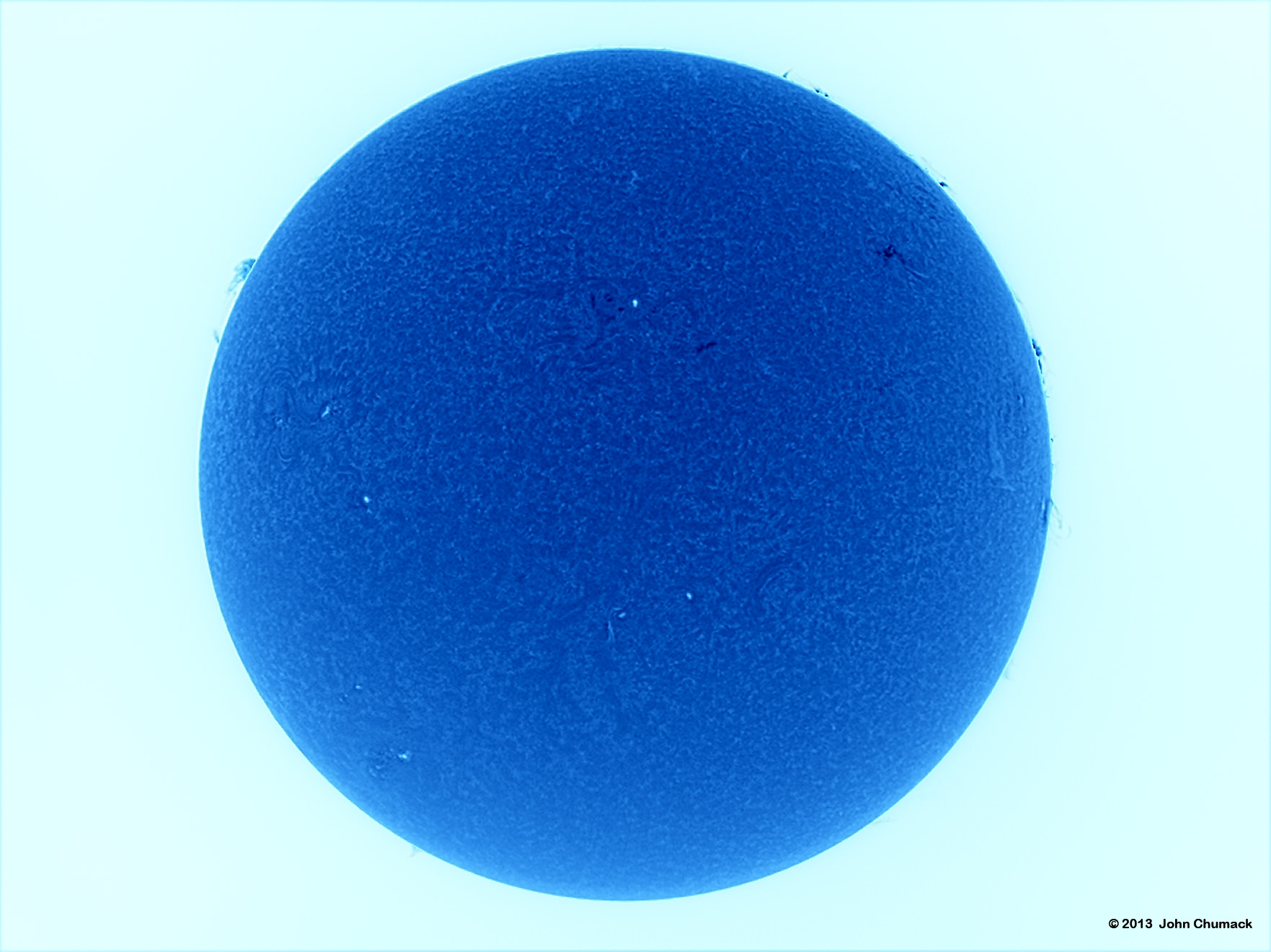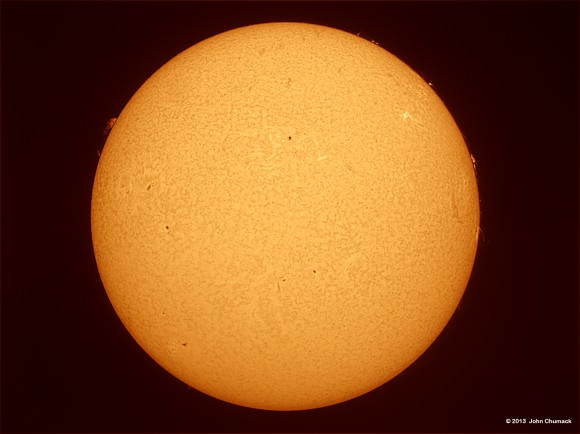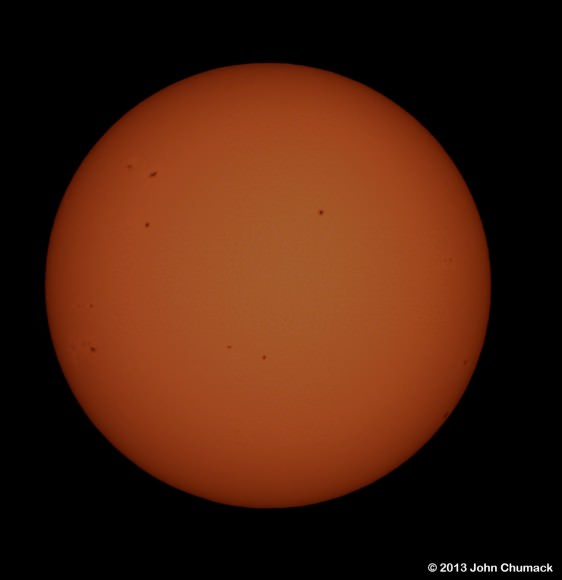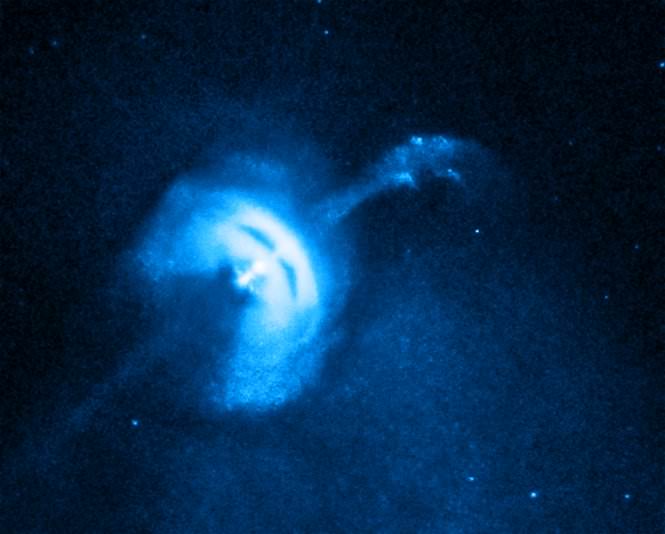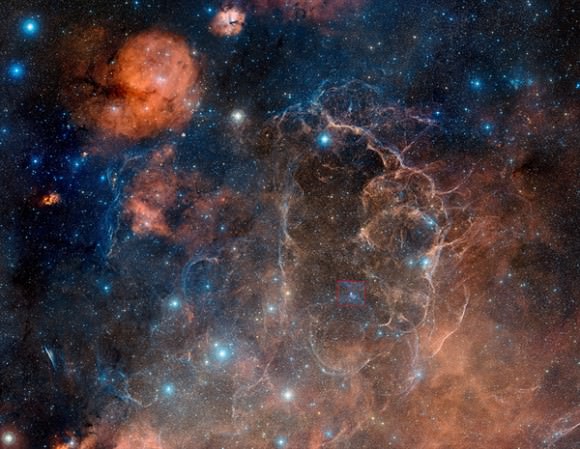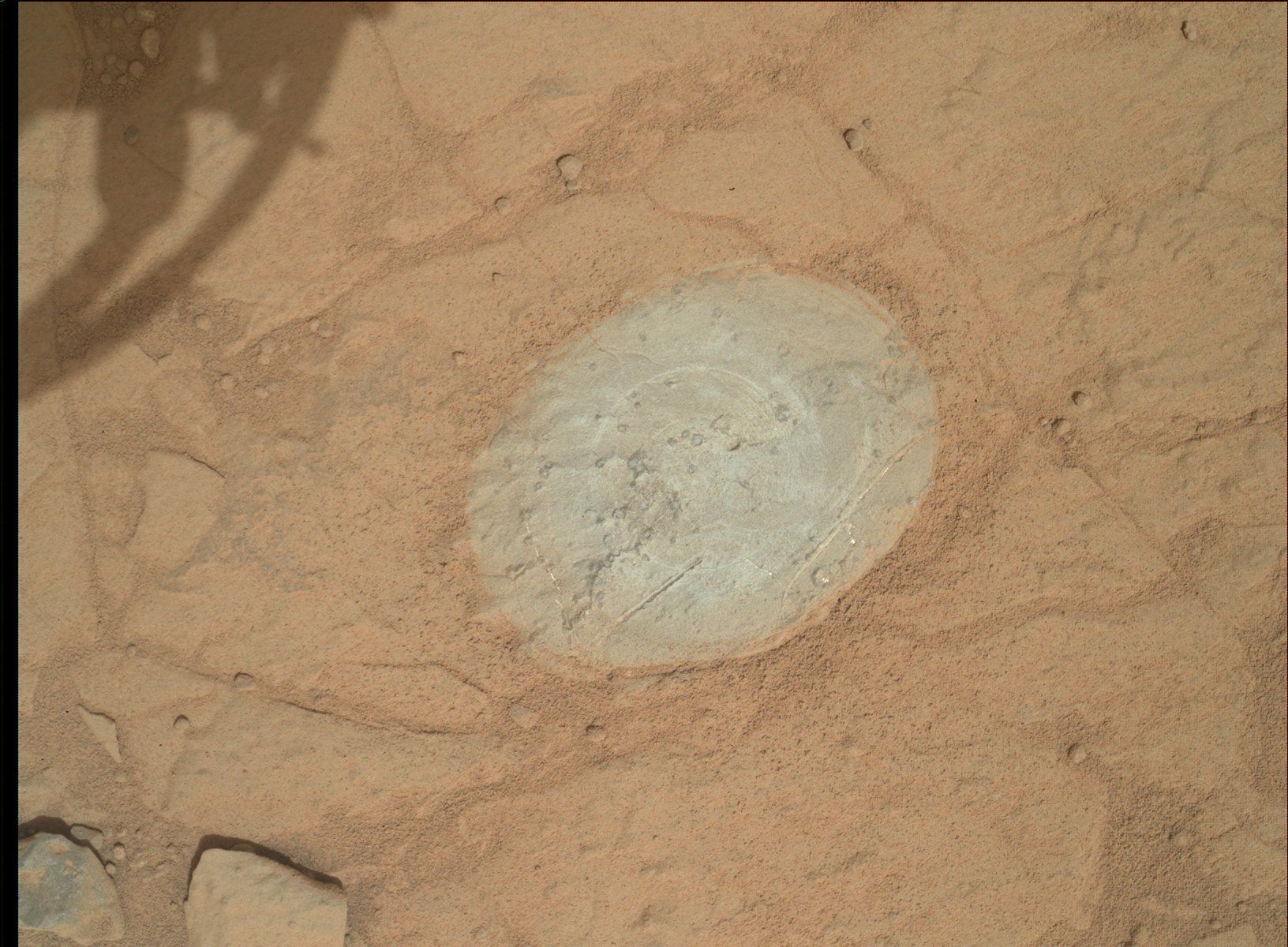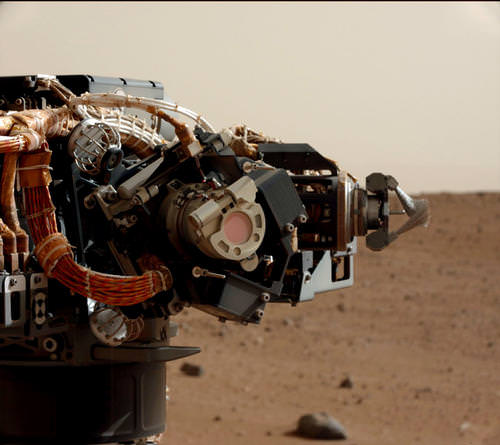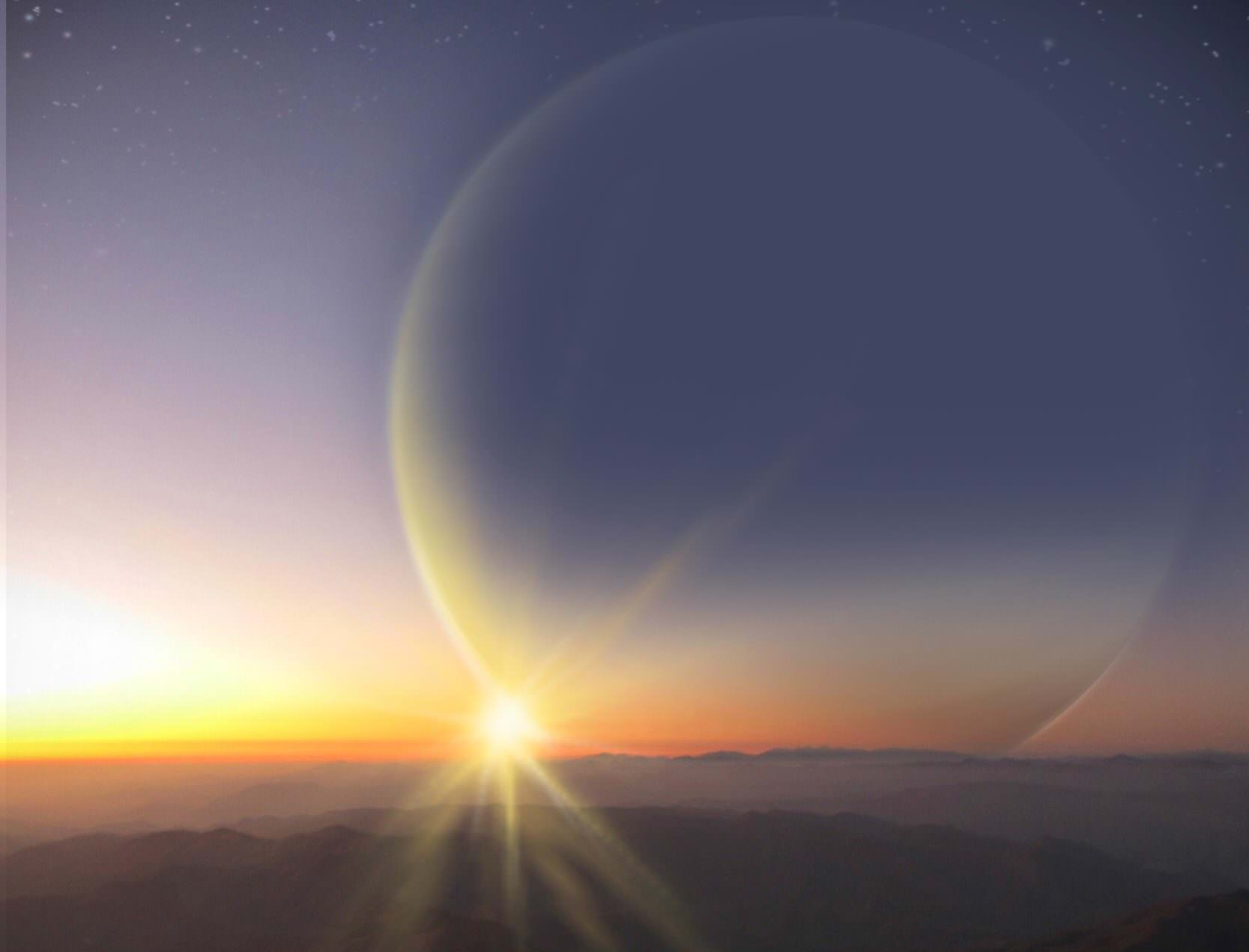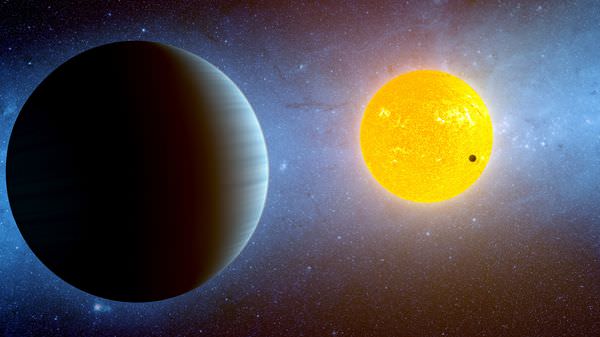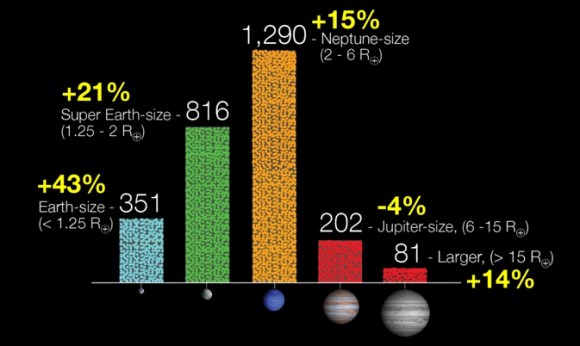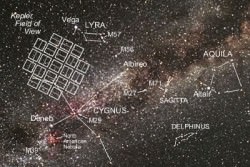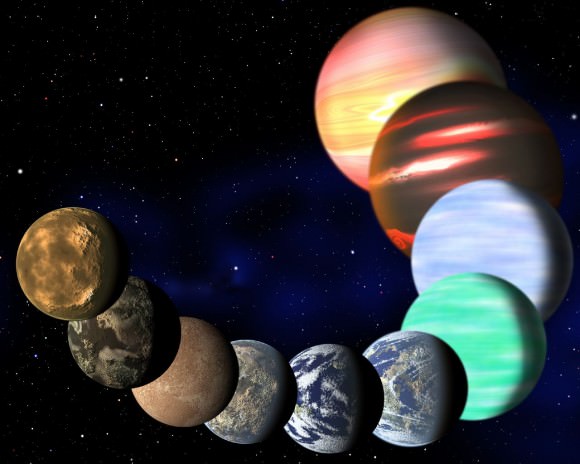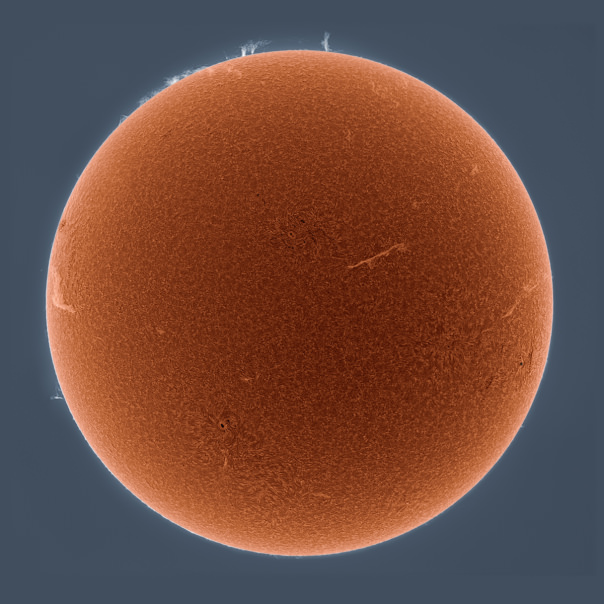Astronomers have found what may be considered a piece of a galactic skeleton; a dark structure of gas and dust that might provide a backbone on which one of the spiral arms extend from the central bar of the Milky Way galaxy.
“This ‘bone’ is likely made from high density gas — the type that forms stars — and while the feature that we see is a sinuous distinction you get from dust, there is a huge amount of gas,” said Alyssa Goodman of the Harvard-Smithsonian Center for Astrophysics (CfA) at a press conference at the American Astronomical Society meeting in Long Beach, California today. “But we just don’t know yet what it is.”
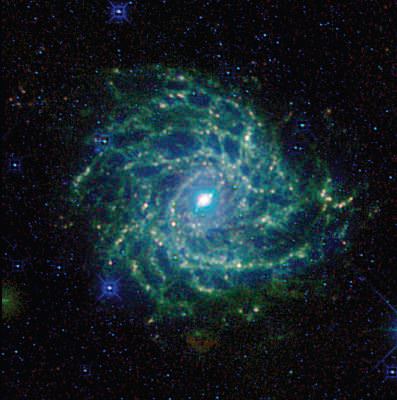
While this is the first time such a structure has been seen in our own galaxy, other spiral galaxies seemingly display internal “endoskeletons.” Observations, especially at infrared wavelengths of light, have found long skinny features jutting between galaxies’ spiral arms. These relatively straight structures are much less massive than the curving spiral arms.
Goodman said that since we view the Milky Way from the inside, its exact structure is difficult to determine, but it is thought to have a central bar and two major spiral arms that wrap around its disk.
A team of astronomers first spotted the galactic bone while studying a dust cloud nicknamed “Nessie,” since its shape is reminiscent of the Loch Ness monster. The central part of the “Nessie” bone was discovered in Spitzer Space Telescope data in 2010 by James Jackson (Boston University). With further analysis, Goodman’s team determined the dark cloud goes way beyond the original section that was first found, and is as much as eight times longer than Jackson’s original sighting.
Radio emissions from molecular gas show that the feature is not a chance projection of material on the sky, but instead a real feature. Not only is “Nessie” in the galactic plane, but also it extends much longer than anyone anticipated. This slender bone of the Milky Way is more than 300 light-years long but only 1 or 2 light-years wide. It contains about 100,000 suns’ worth of material, and now looks more like a cosmic snake.
“This bone is much more like a fibula – the long skinny bone in your leg – than it is like the tibia, or big thick leg bone,” Goodman said.
It lies along the plane of the Milky Way, and since our vantage point is just above the the plane, Goodman and her team are hopeful that the skeleton may be able to be mapped.
“It’s possible that the ‘Nessie’ bone lies within a spiral arm, or that it is part of a web connecting bolder spiral features. Our hope is that we and other astronomers will find more of these features, and use them to map the skeleton of the Milky Way in 3-D,” she said.
The team’s paper is not quite finished yet, but it is online on the new open source scientific collaboration site, Authorea.
For more information, visit http://milkywaybones.org.

